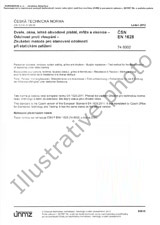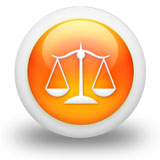We need your consent to use the individual data so that you can see information about your interests, among other things. Click "OK" to give your consent.
ČSN ETSI EN 300392-3-13-V1.2.1 (875042)
Terrestrial Trunked Radio (TETRA); Voice plus Data (V+D); Part 3: Interworking at the Inter-System Interface (ISI); Sub-part 13: Transport layer independent Additional Network Feature Group Call (ANF-ISIGC)
Translate name
STANDARD published on 1.11.2020
The information about the standard:
Designation standards: ČSN ETSI EN 300392-3-13-V1.2.1
Classification mark: 875042
Catalog number: 510779
Publication date standards: 1.11.2020
SKU: NS-1008305
The number of pages: 194
Approximate weight : 613 g (1.35 lbs)
Country: Czech technical standard
Category: Technical standards ČSN
The category - similar standards:
Annotation of standard text ČSN ETSI EN 300392-3-13-V1.2.1 (875042):
V1.2.1
The present document defines the group call communication of interworking at the Inter-System Interface (ISI) for Terrestrial Trunked Radio system (TETRA) supporting Voice plus Data (V+D).
The TETRA V+D interworking - basic operation part defines the interworking between TETRA networks over the corresponding interface: the Inter-System Interface (ISI). It comprises the following sub-parts:
- - Transport Layer Independent Specification ISI general design [2];
- - General Design, PSS1 over E.1 [i.7];
- - General Design, SIP/IP [i.8];
- - Transport Layer Independent Additional Network Feature - ISI Individual Call (ANF-ISIIC) [3];
- - Transport Layer Independent Additional Network Feature Group Call (ANF-ISIGC) (the present document);
- - Transport Layer Independent Additional Network Feature Short Data service (ANF-ISISD) [i.9];
- - Transport Layer Independent Additional Network Feature Mobility Management (ANF-ISIMM) [4];
- - Generic Speech Format Implementation [i.10].
The present document is the ANF-ISIGC sub-part 3-13.
In analogy with Recommendation ITU T I.130 [i.3], the stage one, stage two and stage three of the three level structure is used to describe the TETRA Inter-System Interface services as provided by European Private or Public Trunked Radio System operators:
- - Stage 1, is an overall service description, from the service subscriber´s and user´s standpoint;
- - Stage 2, identifies the functional capabilities and information flows needed to support the services described in stage 1; and
NOTE: The information flows in stage 2 have been drawn as Message Sequence Charts (MSC).
- Stage 3, defines the signalling system protocols and functions needed to implement the services described in stage 1.
The present document details the Interworking Basic Operation of the Terrestrial Trunked Radio system (TETRA). Specifically the present document details the stage 1 aspects (overall service description) of the ANF-ISIGC as seen from the TETRA Switching and Maintenance Infrastructure point of view at the Inter-System Interface (ISI). It details the stage 2 aspects (functional partitioning) of ANF-ISIGC which includes the identification of the functional entities and the flows between them, and finally it details the stage 3 signalling protocols for the ANF-ISIGC services, i.e. the protocols at the relevant reference points between the functional entities defined in stage 2.
The ANF-ISIGC service specifies:
- - TETRA Group Call Clear Speech over the ISI, acknowledged and unacknowledged;
- - TETRA Group Call End-to-End Encrypted Speech over the ISI;
- - TETRA Group Call Circuit Mode one slot data over the ISI;
- - TETRA Group Call Circuit Mode one slot End-to-End Encrypted data over the ISI;
- - TETRA Group Call Circuit Mode N × 2,4 kbit/s, N × 4,8 kbit/s or N × 7,2 kbit/s data, with N = 2, 3 or 4;
- - TETRA Group Call Circuit Mode N × 2,4 kbit/s N × 4,8 kbit/s or N × 7,2 kbit/s End-to-End Encrypted data, with N = 2, 3 or 4
Preview of the standard ČSN ETSI EN 300392-3-13-V1.2.1 (875042)
We recommend:
Updating of laws
Do you want to be sure about the validity of used regulations?
We offer you a solution so that you could use valid and updated legislative regulations.
Would you like to get more information? Look at this page.




 Cookies
Cookies
